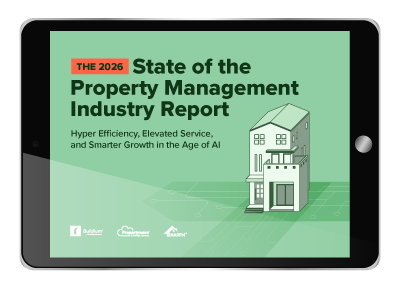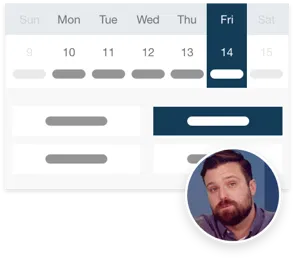As a property manager, there’s a few must-have tools to help you keep your finances in order. Perhaps the most fundamental one is a chart of accounts. Whatever types of properties you manage, a well-structured chart of accounts brings clarity, accuracy, and effective financial management.
In this guide, we’ll explore the basics of a property management chart of accounts, explain why categorizing accounts properly matters, and help you customize it for your specific property needs.
The Structure of a Property Management Chart of Accounts
A chart of accounts forms the backbone for organizing your financial data. It groups all your transactions into categories, making it easier to understand and report on your finances. Typically, it’s organized into five broad categories:
- Assets
- Liabilities
- Equity
- Revenue
- Expenses
Each category includes specific accounts that track different aspects of your operations.
Assets
What It Includes: These are things your business owns and has value, such as cash, accounts receivable (money owed to you), and property-related assets (buildings or equipment).
Why It Matters: Understanding your assets lets you monitor what your company owns, offering insights into cash flow and the financial health of your business.
Liabilities
What It Includes: Liabilities are debts or obligations, including mortgages, accounts payable (money you owe), and security deposits held for tenants.
Why It Matters: Knowing your liabilities helps you manage debts and prevents overlooked financial obligations.
Equity
What It Includes: This is the ownership interest in your company, including the owner’s equity and retained earnings.
Why It Matters: Understanding equity reveals the overall financial position of the business and what remains after liabilities are paid.
Revenue
What It Includes: Revenue includes incomes generated from your properties, such as rental income, application fees, late fees, and other charges.
Why It Matters: Revenue accounts offer a clear picture of earnings and help you track financial goals.
Expenses
What It Includes: Expenses cover the costs of running the property, including maintenance, property management fees, utilities, insurance, and advertising.
Why It Matters: Tracking expenses enables you to control costs, stay within budget, and plan for future spending.
Why Proper Categorization is Important
Categorizing your accounts accurately is crucial for several reasons:
Clear Financial Reporting: Proper categorization allows for more accurate financial reports. When you know exactly where your money is coming from and where it’s going, it’s much easier to generate detailed profit and loss statements, balance sheets, and tax reports.
Tax Compliance: For tax purposes, your accounts must be organized according to legal requirements. A well-organized chart of accounts keeps you ready for audits, and it can make filing taxes simpler and less stressful.
Budgeting and Financial Planning: By categorizing accounts into specific areas (such as maintenance, utilities, or management fees), you can track spending patterns and make informed decisions. It’s easier to spot areas where you might be overspending, and you can adjust your budget accordingly.
Operational Efficiency: An organized chart of accounts allows property managers to work more efficiently. You can quickly pull up any needed financial data, track performance, and make adjustments without digging through piles of disorganized receipts and invoices.
Common Accounts in Property Management
Understanding common accounts used in property management is essential for building your chart of accounts. Here are some of the most important accounts you’ll likely encounter:
Rental Income
What It Includes: All money collected from tenants, including base rent, late fees, and pet fees.
Example: If a tenant pays $1,200 for monthly rent and a $50 late fee, the total rental income would be $1,250.
Property Maintenance Expenses
What It Includes: Costs related to maintaining the property, such as landscaping, repairs, cleaning, and pest control.
Example: If you hire a contractor to fix a broken air conditioner, the expense would fall under property maintenance.
Management Fees
What It Includes: Fees paid to property managers for handling day-to-day operations.
Example: If your management company charges 10% of the rent for their services, a $1,200 rent payment would result in a $120 management fee.
Utilities
What It Includes: Costs for utilities such as water, electricity, gas, and trash removal.
Example: If you pay for the water and sewer services for a multi-unit building, the monthly utility bill might be categorized as an expense under this account.
Advertising Expenses
What It Includes: Costs associated with advertising your properties to potential tenants, including online listings, print ads, or signage.
Example: If you pay $100 for an online ad for an apartment vacancy, it would be recorded under advertising expenses.
Capital Improvements
What It Includes: Larger, one-time expenses for improving or upgrading the property, such as new roofs, renovations, or major equipment purchases.
Example: Installing a new HVAC system or upgrading the kitchen in a rental unit would be considered a capital improvement.
Customizing Your Chart of Accounts for Different Property Types
Your chart of accounts should be customized based on the type of properties you manage. Here are a few examples:
Single-Family Homes: Basic categories such as rental income, maintenance, and utilities may suffice.
Multifamily Units: For larger properties, you might need more detailed accounts, including separate categories for utilities for each unit or individual expense accounts for each building.
Commercial Properties: If you manage commercial properties, you’ll have more accounts related to leasing, property taxes, and larger-scale maintenance.
The key is to adapt your chart of accounts to the specific needs of your properties and the scale of your operation.
Frequently Asked Questions
What is a chart of accounts?
A chart of accounts is a list of all the financial accounts in the general ledger of a company. These accounts categorize transactions for financial reporting purposes. In property management, the chart of accounts is customized to track various income and expenses related to property operations.
Why is it important to customize the chart of accounts for different property types?
Customizing the chart of accounts for different property types makes it easier to track all your specific expenses and income streams accurately. This allows for precise financial reporting and helps property managers make informed decisions based on the specific needs of single-family homes, multi-family units, or commercial properties.
How can a well-organized chart of accounts benefit property managers?
A well-organized chart of accounts provides clarity and transparency in financial reporting, improves budget control, simplifies tax preparation, and supports better decision-making. It helps property managers stay on top of expenses and revenue and get a step closer to smoother operations and better financial management.
Read more on
